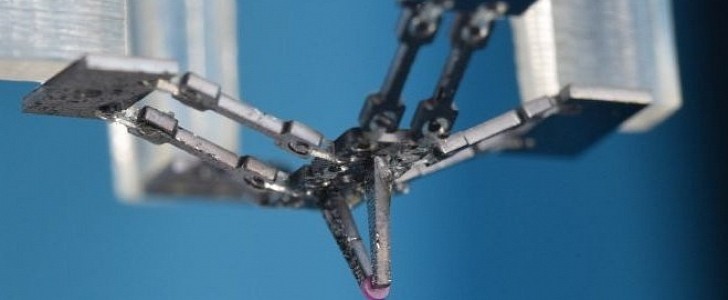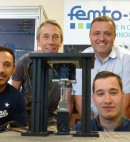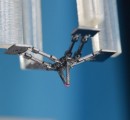One of the most exciting new developments comes from France – MiGriBot (Miniaturized Gripper Robot) is the name of a tiny robot that can perform high-precision tasks really fast.
Robots giving a helping hand in various manufacturing facilities or in construction work are becoming more common every day. We can take a step further and imagine a future where thousands of micro-robots would be able to complete millions of high-precision operations per minute, occupying no less than one square meter (10.7 square feet) inside micro-factories. At least, that’s what researchers at FEMTO-ST (Franche-Comté Electronique Mécanique Thermique et Optique – Sciences et Technologies) are envisioning.
This research institute, affiliated with the French National Centre of Scientific Research (CNRS) and the University of Franche-Comté (UFC), is where MiGriBot was born and claims now to be the fastest robot of its kind in the world.
Two years ago, a robot developed at the University of Tokyo was able to complete 72 operations per minute. Prior to that, Harvard had introduced a micro-robot, but that one wasn’t able to grasp objects.
Now, the French MiGriBot demonstrated that it can grab and move a micro-object more than 700 times per minute, the equivalent of approximately 12 operations per second. This not only breaks the previous world record for fast nanorobots but also shows how fast things are evolving in nanotechnology.
Redwan Dahmouche, associate professor at UFC, led the team responsible for this great success. MiGriBot is special thanks to its innovative architecture and materials. Its tiny mechanical arms are made of something called polydimethylsiloxane, which can also be found in oils and certain rubbers. This flexible structure is what gives the nanorobot its remarkable ability to handle objects. On the other hand, parallel architecture (opposed to the conventional serial architecture) is what improves the coordination among the robot’s different parts, resulting in greater speed.
MiGriBot is set to play an important role in microelectronics, where there’s a huge demand and constantly increasing.
You can learn more about the MiGriBot’s structure in the presentation video below.
This research institute, affiliated with the French National Centre of Scientific Research (CNRS) and the University of Franche-Comté (UFC), is where MiGriBot was born and claims now to be the fastest robot of its kind in the world.
Two years ago, a robot developed at the University of Tokyo was able to complete 72 operations per minute. Prior to that, Harvard had introduced a micro-robot, but that one wasn’t able to grasp objects.
Now, the French MiGriBot demonstrated that it can grab and move a micro-object more than 700 times per minute, the equivalent of approximately 12 operations per second. This not only breaks the previous world record for fast nanorobots but also shows how fast things are evolving in nanotechnology.
Redwan Dahmouche, associate professor at UFC, led the team responsible for this great success. MiGriBot is special thanks to its innovative architecture and materials. Its tiny mechanical arms are made of something called polydimethylsiloxane, which can also be found in oils and certain rubbers. This flexible structure is what gives the nanorobot its remarkable ability to handle objects. On the other hand, parallel architecture (opposed to the conventional serial architecture) is what improves the coordination among the robot’s different parts, resulting in greater speed.
MiGriBot is set to play an important role in microelectronics, where there’s a huge demand and constantly increasing.
You can learn more about the MiGriBot’s structure in the presentation video below.








